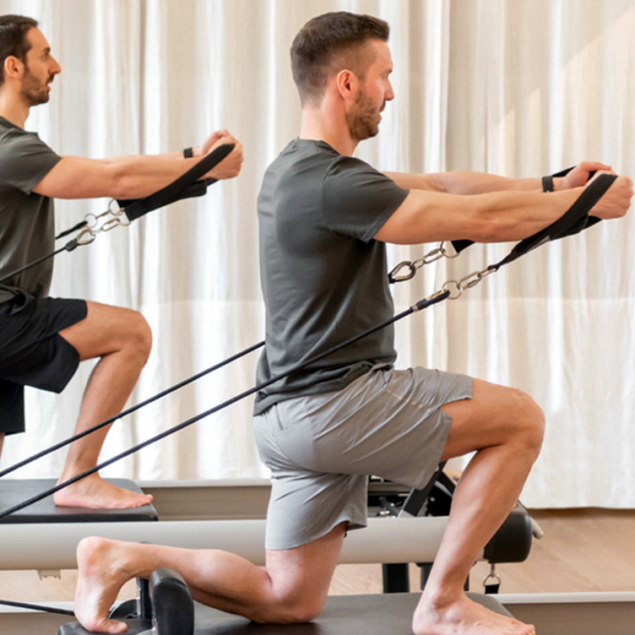
Pilates is a popular form of fitness today because it’s accessible to everyone, relatively uncomplicated, and enjoyable; but Pilates is so much more than just stretching and flexing.
There are quite a variety of exercises in the Pilates system and different types of equipment that can be used. The most common forms of Pilates involve either a mat, similar to yoga, and the other is using a machine, called a “reformer”. The most common question people ask us is: what’s the difference between mat Pilates and Reformer Pilates? The answer depends on which suits you best and what type of Pilates will help you achieve your fitness goals. So, to help you, we’ve put a general guide together which covers both.
Although there are variations in the type of Pilates exercises and equipment used, Pilates focuses primarily on building your body’s core. Through this, Pilates aims to improve your flexibility, posture, strength, mobility, balance and muscle tone during quick sessions that can be adjusted to suit your fitness level. Either by using a mat or a reformer machine, Pilates connects your upper and lower body to promote better overall coordination and movement – both of which are helpful in day to day activities and general wellbeing.
You are probably most familiar with Mat Pilates as people often confuse or associate it with Yoga, due to the smooth and fluid movements done on a mat. Mat Pilates involves performing body-weight exercises and movements low to the ground such as roll-ups and single-leg circles. Because exercising on the mat provides resistance against gravity, Mat Pilates focuses on developing and strengthening your legs, stomach, lower and upper back muscles. Simple, yet effective, all you need is a mat and yourself to do mat pilates.
Reformer Pilates, on the other hand, involves exercising using a bed-like piece of equipment which contains a sliding flat platform and adjustable strings. This Pilates machine, known as a “reformer”, is made up of a foot bar, straps and pulleys which add tension and resistance to your Pilates workout technique.
Reformer Pilates is much more dynamic and versatile as the machine allows you to perform a whole range of workouts in many different body positions, including lying down, standing, sitting, sideways, pulling the straps, pushing the foot bar and more. Due to the adjustability of the reformer equipment, Reformer Pilates can be tailored to target one specific area, smaller muscle groups or the entire body, as well as adjusted specifically to your fitness and capability levels.
So, if you’re considering Pilates classes, you may be wondering which suits you best and what kind of result you can expect from each. Both Mat Pilates and Reformer Pilates provide benefits when it comes to developing and toning your body’s core. You want to try Reformer Pilates classes if:
Mat Pilates Classes tend to be more around:
Joining Reformer Pilates classes, on the other hand, can help you effectively build strength, tone muscles and improve flexibility, making it a great choice for everyone. In the end, it really comes down to deciding what kind of Pilates best suits your routine, schedule and preference. Choosing the one you enjoy most will make it much easier to stay committed to working out and transforming your lifestyle.
The Kaizen Approach is all about striving for incremental and continuous improvements to reap phenomenal results. In Pilates, this means aiming for small but consistent working outs to achieve the fitness results you want; this Kaizen Approach is what inspired us here at KX Pilates. Session by session through classes tailored to your own needs and schedule, we applied this to Reformer Pilates. This way, through continuous ongoing workouts, you’ll soon start to see big improvements that you and your friends will all notice. KX Pilates reinvigorates the traditional Pilates workout with a modern flair to provide you with your own fitness evolution you’ll love every single day.